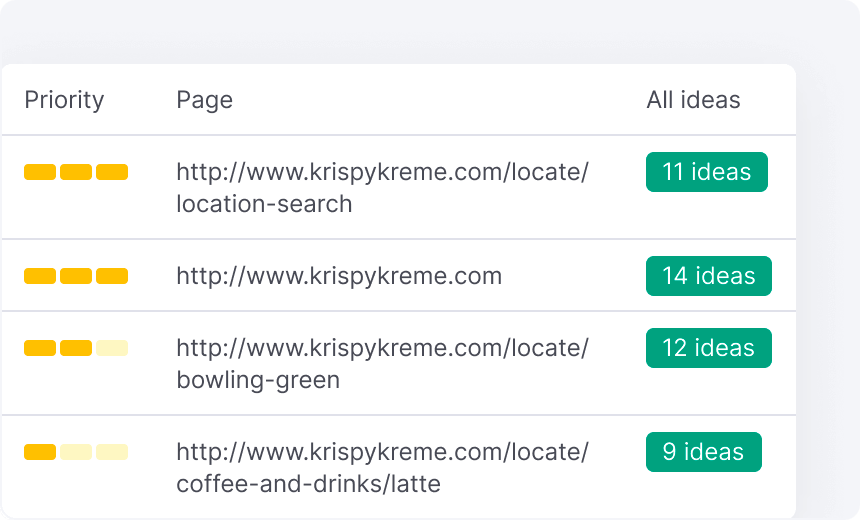A Detailed Look at What Is Not Considered a Default Medium in Google Analytics
A Detailed Look at What Is Not Considered a Default Medium in Google Analytics
Blog Article
Introducing the Unconventional Mediums in Google Analytics Beyond Default Settings
In the world of electronic analytics, Google Analytics stands as a keystone for organizations looking for to comprehend their online presence. By venturing past the surface area and diving into the intricacies of social media information, e-mail campaign efficiency, reference web traffic sources, direct traffic patterns, and customized network collections, a treasure chest of details awaits those willing to welcome a much more nuanced approach.

Leveraging Social Media Site Insights
Occasionally ignored, yet tremendously beneficial, is the practice of leveraging social networks understandings within the realm of Google Analytics. By incorporating data from systems like Facebook, Twitter, Instagram, and LinkedIn right into Google Analytics, companies can obtain a deeper understanding of their audience and the efficiency of their social media sites campaigns.
With this assimilation, marketing experts can examine and track customer behavior on their site that originates from social media sites systems. They can identify which social media channels are driving the most traffic, which material is resonating with the audience, and which campaigns are converting the most leads. This insight enables data-driven choices to maximize social media sites strategies and improve overall advertising and marketing performance.
In addition, by combining social media insights with Google Analytics, organizations can produce extra targeted and personalized campaigns - what is not considered a default medium in google analytics. They can utilize market info, rate of interests, and on the internet behaviors gathered from social media to refine their audience division and supply tailored messages that resonate with specific customer teams. This targeted strategy can cause greater interaction, enhanced conversions, and ultimately, improved return on financial investment
Revealing Email Campaign Efficiency
Discovering Email Project Performance involves analyzing key metrics and efficiency signs to assess the effectiveness of e-mail advertising efforts. When diving into email project performance, it is essential to assess metrics such as open prices, click-through rates, conversion prices, and unsubscribe rates. Open up rates show the percent of recipients that opened up the email, giving insight into the efficiency of subject lines and sender names. Click-through rates gauge the portion of recipients that clicked on web links within the email, revealing interaction degrees. Conversion rates track the percent of recipients that completed a wanted activity after clicking on a web link in the email, such as making a purchase or authorizing up for an e-newsletter. Finally, unsubscribe rates highlight the number of receivers that opted out of obtaining further e-mails, shedding light on email material high quality and importance. By examining these metrics, online marketers can adjust their e-mail advocate better involvement and performance.
Analyzing Recommendation Website Traffic Resources
After evaluating the performance of email campaigns via essential metrics such as open rates and conversion rates, the next vital action is assessing reference website traffic resources in Google Analytics to recognize where website visitors are coming from and how they interact with the site. Referral traffic resources describe the internet sites that guide individuals to your site with clickable links. By delving right into this information, organizations can obtain understandings right into which outside platforms are driving website traffic to their website, whether it be social media sites systems, partner sites, or online directories.
Assessing reference web traffic can supply important information on the efficiency of exterior advertising efforts and partnerships. It aids services determine high-performing referral resources that contribute considerably to website web traffic and conversions. By recognizing the behavior of site visitors coming from different referral resources, businesses can customize their marketing approaches to enhance engagement and conversions. Google Analytics uses detailed records on reference web traffic, permitting companies to track the efficiency of each referral resource accurately and make data-driven choices to boost their on the internet visibility.
Exploring Direct Web Traffic Patterns
Checking out the straight website traffic patterns in Google Analytics gives valuable insights into user habits and the efficiency of campaigns - what is not considered a default medium in google analytics. Direct web traffic refers to visitors who arrive at a site by straight inputting the link into their browser, using bookmarks, or clicking on untagged web links. Recognizing straight website traffic patterns can aid marketing experts review the influence of offline advertising efforts, brand recognition, and the effectiveness of word-of-mouth references
By diving into direct traffic information, organizations can uncover vital details concerning individual intent and brand loyalty. Assessing the actions of direct site visitors, such as the web pages they go to, the time invested on site, and the conversion rate, can give a much deeper understanding of customer interaction and the overall performance of the web site in converting site visitors into customers.
In addition, tracking straight traffic patterns with time enables businesses to useful source recognize trends, seasonality impacts, and the success of certain projects or promotions in driving direct sees. This info can then be used to fine-tune advertising approaches, maximize web site content, and enhance the total individual experience to make best use of conversions.
Utilizing Customized Channel Groupings
Making use of customized network groupings in Google Analytics enables businesses to classify and analyze their web site web traffic based on certain standards, offering beneficial understandings for enhancing advertising and marketing techniques. Custom-made network groupings allow firms to create their own tailored groups of traffic sources, such as social media sites, natural search, e-mail campaigns, and recommendation web traffic. By specifying these groupings, companies can get a much deeper understanding of just how different marketing channels add to their internet site traffic and conversions.
This attribute is particularly helpful for services with varied advertising and marketing strategies across various platforms. A business running both paid and natural social media projects can separate in between the two to evaluate their private efficiency properly. Additionally, customized channel groupings can help identify any kind of forgotten or taken too lightly website traffic resources that might be driving useful interaction.
Verdict

By venturing past the surface and delving right into the details of social media data, email project efficiency, referral web traffic resources, straight website traffic patterns, and custom channel collections, a prize chest of information awaits those ready visit this web-site to welcome a more nuanced method. They can determine which social media networks are driving the most traffic, which web content is resonating with the audience, and which campaigns are converting the most leads.After evaluating the performance of email campaigns with vital metrics such as open prices and conversion prices, the following essential step is evaluating recommendation website traffic resources in Google Analytics to recognize where internet site site visitors are coming from and how they connect with the website. Custom channel groupings enable companies to create their very own customized groupings of traffic sources, such as social media, organic search, e-mail projects, and reference website traffic. By leveraging social media understandings, discovering email campaign performance, analyzing referral traffic resources, discovering straight web traffic patterns, and using customized channel groups, marketers can obtain beneficial understandings right into their on-line visibility.
Report this page